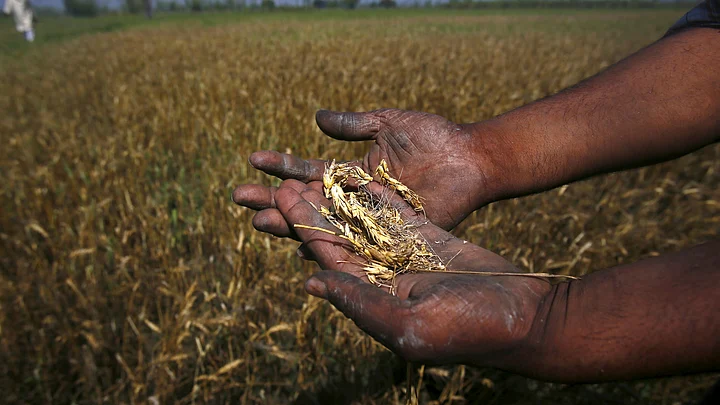Being in a farmer’s shoes right now would make one realize how muddy his fields are. Abnormal weather conditions are churning, a whirlwind that leaves hopes dashed and dreams shattered.
Those lucky enough to not be dependent on agriculture for a living, are enjoying the cool weather of March and April. On the other hand, farmers have had to bear the brunt of abnormal weather patterns.
Crops have been destroyed by storms and hail. However, it is predicted that life for the farmer is going to get more tough, with monsoons being affected by El Nino patterns in the Pacific Ocean.
For centuries, people have looked to the skies for signs of rain in the monsoon season. The word is derived from the Arabic word ‘Mausim’ meaning season. Monsoons are important because a majority of rainfall, precipitation and humidity happens in June – September, when moisture-laden winds from the Indian Ocean bring rain to the hinterland. These winds come from the Bay of Bengal in the east and the Arabian Sea in the west.
60% of Indian farms are rain-fed and for crops to be sown, it is crucial for farmers, food production and India’s prosperity that it rains when it must.
Monsoons are not consistent by any standards. They are erratic over 35% of the time and require forecasting. Monsoons always fail in some part of India every year and drought in varied degrees is experienced once every six years. It is not uncommon that at one point, one region of the subcontinent is facing floods while the other is experiencing a drought. It is also not necessary that every time there is a drought, food production will fall.
El Nino is an intriguing phenomenon which occurs over 10,000 kilometres away on the other side of the globe, when surface temperatures in the Pacific Ocean rise over several months. These are associated with subsequent changes in wind patterns above the Pacific — impacting weather across the world and even in India.
Every year there are reports connected to El Nino pattern formations and Indians are warned of impending dire consequences. However, every time there is an El Nino formation on the Pacific Ocean, it does not lead to a drought or failure of monsoon.
Weather-modelling suggests that every time there has been a drought, El Nino formation has taken place. But, this simply means that El Nino is one important factor. It may not be enough on its own to generate conditions of a drought. Even when El Nino conditions are recorded, normal rainfall can happen.
At the end of the day weather predictions have the same chances of going wrong as a farmer’s guess.
No one knows what’s coming.
My guess is, it’s going to be a normal year. We desperately hope for that to be true.
-------------------------------------------------------------------------------------------------------
Related Links
Politicians Rant While the Indian Farmer Grows Restless
Land Acquisition: Plain Right Foolish to Acquire Along Highway
(At The Quint, we question everything. Play an active role in shaping our journalism by becoming a member today.)
